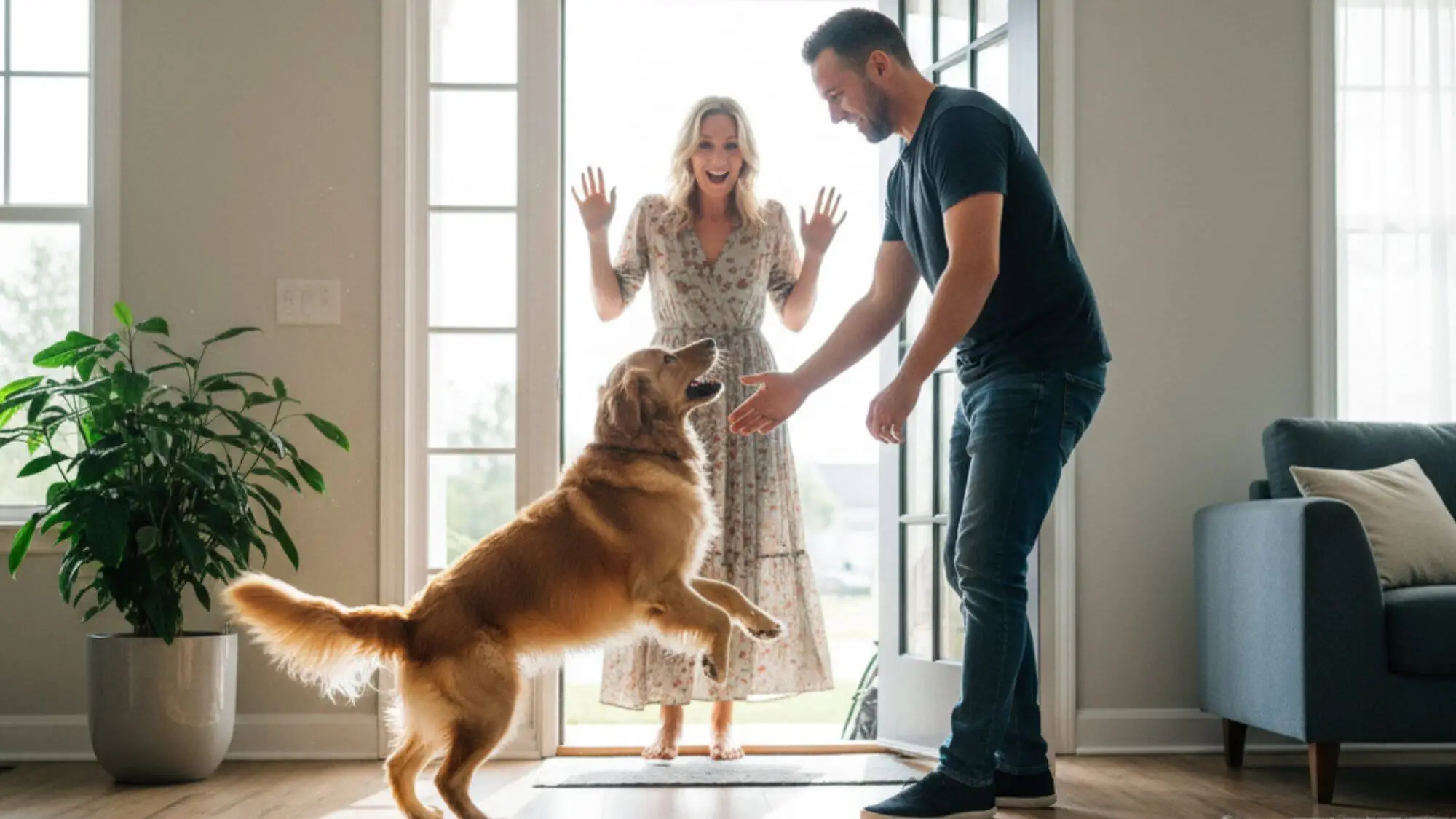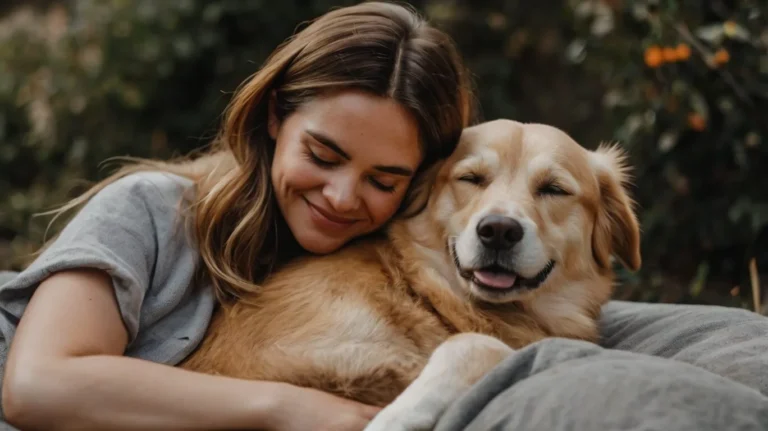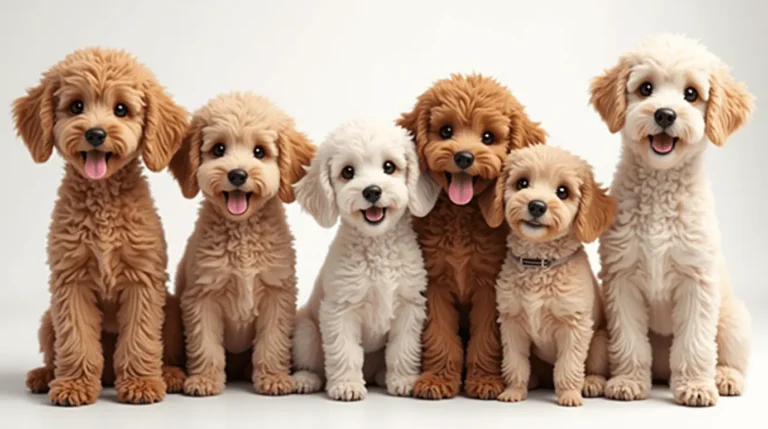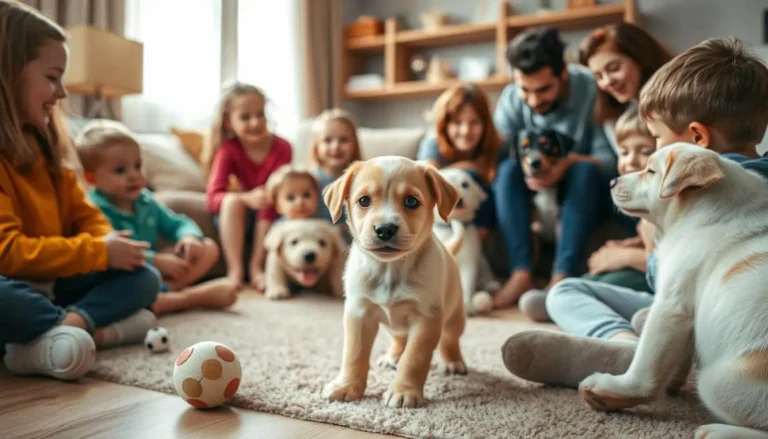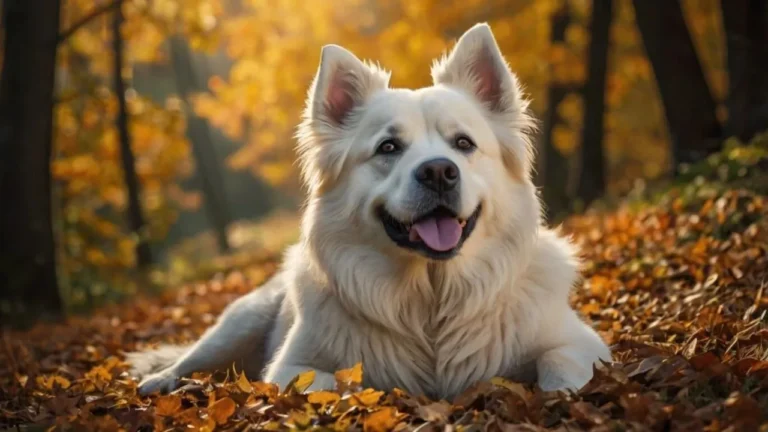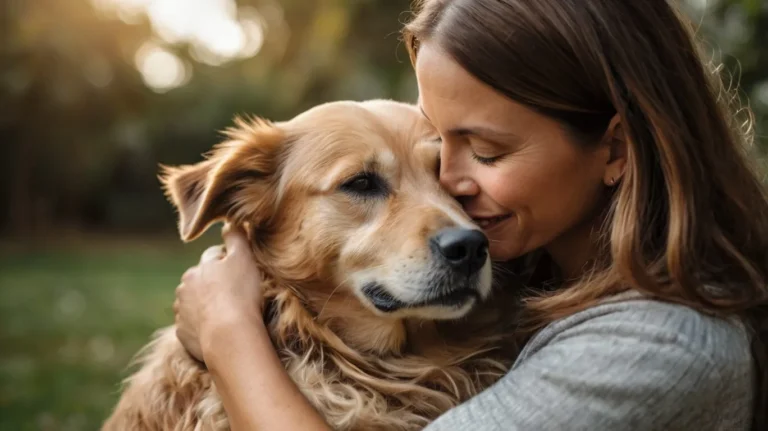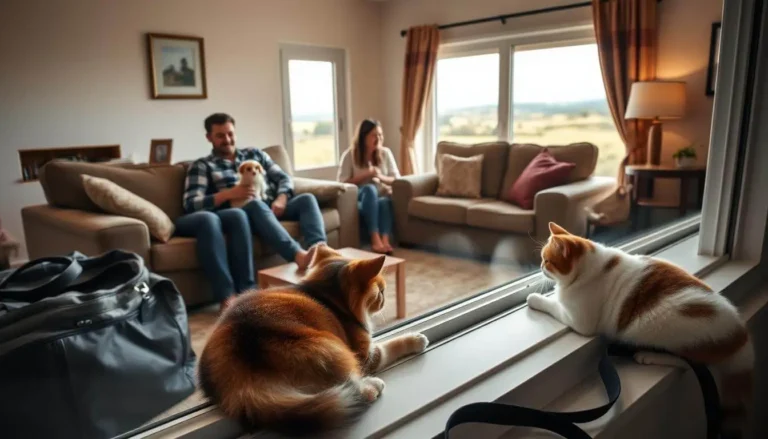Teaching Polite Greetings — A Calm Dog is a Happy Dog
If your dog bounces with excitement every time someone walks through the door, you’re definitely not alone. Many dogs naturally express joy by jumping — it’s their way of saying, “I’m so happy you’re here!” But while that enthusiasm is adorable at first, it can quickly turn embarrassing (and even dangerous) when your pup greets guests by leaping onto them.
Polite greetings dog training is all about transforming that wild energy into calm, friendly manners. With the right approach, patience, and consistency, you can teach your dog to sit politely instead of jumping, making every hello pleasant for both your visitors and your furry friend.
In this guide, you’ll learn practical, trainer-approved techniques to stop your dog from jumping on people, understand why they do it in the first place, and discover how positive reinforcement can make a huge difference. Let’s dive into how you can help your dog greet others with confidence and calm behavior — the polite way!
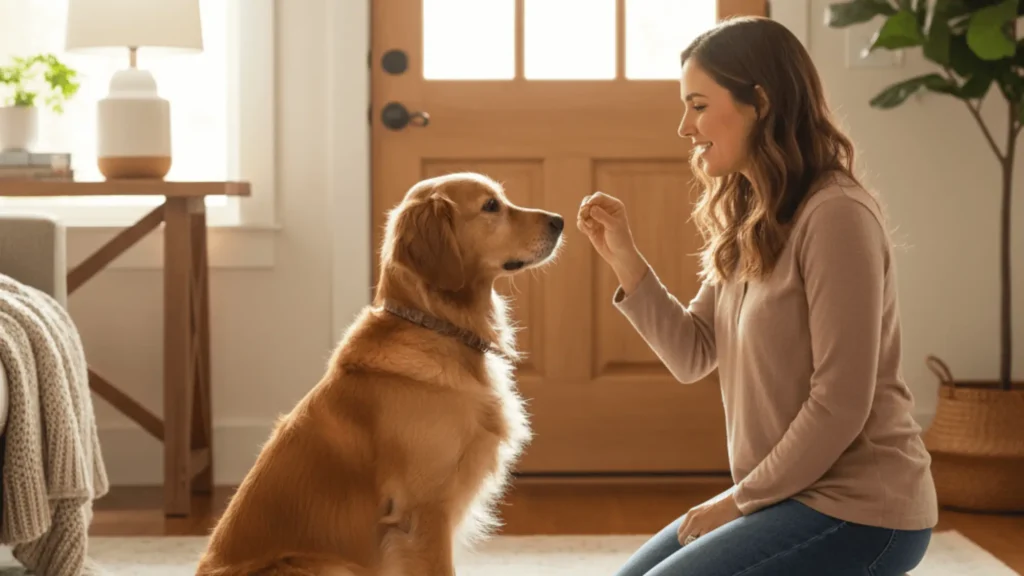
Why Dogs Jump on People (Understanding the Behavior)
Common reasons dogs jump on guests or family members
Dogs are naturally social animals who love to connect with people — and jumping is often their way of saying “hi!” Unfortunately, what seems like friendly excitement to your dog can feel overwhelming or even unsafe to your guests. Understanding why dogs jump on people is the first step toward correcting the behavior.
🐕 1. Excitement and Greeting Behavior
When dogs see someone they love, their excitement can overflow. Jumping up allows them to get closer to our faces — where dogs instinctively want to sniff and greet. This behavior often starts as a harmless puppy habit that continues into adulthood if it isn’t redirected early on.
💕 2. Seeking Attention
Dogs quickly learn that jumping often gets them noticed — even if the attention is negative. A simple “No!” or gentle push can still reinforce the behavior because the dog’s main goal is to interact. In their mind, any attention is better than being ignored.
🐾 3. Lack of Impulse Control
Some dogs, especially younger ones or high-energy breeds, struggle with self-control. They act on impulse, jumping before thinking. Teaching calm greetings is an important part of impulse control training and helps your dog understand when it’s appropriate to get excited.
🦴 4. Inconsistent Training or Reinforcement
If some family members allow jumping while others don’t, your dog receives mixed signals. Inconsistency makes it hard for them to understand what’s expected. Dogs thrive on clear, repetitive communication — so everyone in the household needs to follow the same rules.
🌟 5. Underlying Anxiety or Overstimulation
In some cases, jumping can be a sign of stress rather than pure joy. Dogs who feel anxious or overstimulated might jump as a way to release tension. Recognizing your dog’s emotional state — through body language like tail movement, ears, and posture — can help you respond calmly and appropriately.
In short: Dogs don’t jump out of defiance; they do it out of emotion — excitement, habit, or confusion. By understanding the root cause, you can respond with empathy and use positive training methods to guide your dog toward calmer, more polite greetings.
How Dogs Communicate Through Body Language
Dogs may not speak our language, but they’re constantly “talking” — through movement, posture, facial expressions, and energy. Learning to read your dog’s body language helps you understand what they’re feeling and why they behave the way they do, especially when it comes to greeting guests.
🐶 1. Tail Position and Movement
A dog’s tail is one of its most expressive tools. A wagging tail doesn’t always mean happiness — the speed, height, and direction all matter.
- A relaxed, slow wag usually signals friendliness.
- A stiff, high tail can mean alertness or overstimulation.
- A tucked tail shows fear or uncertainty.
When a dog greets someone with a high, fast wag and bouncy movement, it’s often a sign of overexcitement, which can quickly turn into jumping.
👀 2. Eye Contact and Facial Expressions
Dogs use their eyes to convey emotion. Soft, blinking eyes usually indicate calmness, while wide eyes or intense staring can mean excitement or stress. Raised eyebrows, open mouths, or panting without heat can also signal anticipation — all common before a dog jumps to greet someone.
🐾 3. Body Posture and Movement
A dog leaning forward with weight on its front paws or bouncing up and down is preparing to spring — literally. This “ready-to-jump” posture is driven by enthusiasm. On the other hand, a relaxed, balanced stance with paws firmly on the ground shows confidence and calm behavior.
🐕 4. Ears and Head Position
Ears pulled back slightly often show friendliness or excitement, while ears held high may indicate alertness. If your dog tilts its head, wags its tail, and bounces up, it’s trying to engage and get attention. Recognizing these cues early helps you redirect the energy before the jumping starts.
💬 5. Energy and Vibe You Send Back
Dogs mirror human energy. If you greet them with high-pitched voices or sudden movements, they’ll likely become more excited. Staying calm, speaking softly, and moving slowly sends a clear message: relax, everything’s okay.
In essence: Your dog’s body is their language. By learning to interpret it, you can recognize when excitement is building and gently guide them toward calm, polite behavior before they leap. Understanding these subtle signals is key to successful polite greetings dog training — and a stronger bond between you and your furry friend.
Why Scolding Doesn’t Work (and What to Do Instead)
It’s natural to feel frustrated when your dog jumps on guests or family members, and the first instinct for many owners is to scold — saying “No!” loudly, pushing them down, or even snapping at them. However, scolding rarely solves the problem and can sometimes make it worse.
🐕 1. Dogs Don’t Understand Punishment the Way Humans Do
When you scold your dog for jumping, they may not connect the punishment with the act itself. Instead, they might associate it with you, the guest, or the situation, causing confusion or fear. This can make them anxious around visitors, leading to new behavioral problems rather than solving the jumping.
💡 2. Scolding Increases Excitement or Stress
Dogs often interpret yelling or sudden movements as attention, even if it’s negative. For high-energy or excitable dogs, scolding can actually reinforce the behavior. They might think: “Wow, everyone’s reacting — this must be important!” This is why jumping can continue or even intensify over time.
✅ 3. What Works Instead: Positive Reinforcement
The most effective way to stop jumping is through rewarding calm behavior. Instead of punishing the jump, focus on teaching your dog what you want them to do:
- Reward sitting calmly: When your dog keeps all four paws on the floor, immediately give praise, treats, or a gentle pet.
- Ignore jumping: Turn away and avoid eye contact when they jump, making it clear that jumping does not get attention.
- Redirect energy: Encourage a substitute behavior, like “sit” or “place” on a mat, and reward compliance.
🐾 4. Consistency Is Key
Every member of the household — and every guest — must follow the same rules. Mixed messages, like sometimes scolding and sometimes rewarding, confuse your dog and slow progress. Consistency, combined with positive reinforcement, is the secret to long-term success.
In short: Scolding doesn’t teach your dog how to behave — it only teaches them what not to do, often leaving them anxious or confused. By rewarding calm behavior, redirecting energy, and staying consistent, you can teach your dog polite greetings that make every visit enjoyable for everyone.
Insights from Professional Dog Trainers
When it comes to teaching dogs polite greetings, professional dog trainers offer valuable guidance rooted in canine behavior science and years of practical experience. Their insights can help dog owners understand not just what to do, but why certain methods work better than others.
🐕 1. Focus on Positive Reinforcement
Experienced trainers consistently emphasize reward-based training. Instead of punishing unwanted behavior, they encourage rewarding behaviors you want to see more of. For jumping, this means:
- Giving treats when your dog sits calmly at the door
- Praising quiet, composed greetings
- Using toys or affection as rewards for polite behavior
Positive reinforcement strengthens the bond between dog and owner while creating clear expectations. Dogs learn faster when they associate good behavior with positive outcomes.
💡 2. Timing and Consistency Are Crucial
Professional trainers stress the importance of immediate feedback. Dogs have short attention spans, so rewards must occur the moment they perform the desired behavior. Delayed rewards can confuse your dog and slow progress.
Consistency is equally important: every family member and visitor should follow the same rules, reinforcing the message that jumping is never acceptable and calm greetings are always rewarded.
🐾 3. Practice in Real-Life Situations
Trainers recommend simulating real guest arrivals during practice sessions. This allows your dog to learn appropriate behavior in situations where they naturally get excited. For example:
- Ask a friend to knock or ring the doorbell while you guide your dog to sit
- Reward your dog for staying calm when the door opens
- Gradually increase distractions as your dog improves
Real-life practice ensures that polite greeting behaviors transfer from training sessions to everyday life.
🦴 4. Understand Your Dog’s Individual Personality
Professional trainers note that not all dogs learn the same way. High-energy breeds may require more exercise before guests arrive, while shy dogs might need gentle encouragement. Tailoring training to your dog’s temperament increases success and reduces stress for both dog and owner.
🌟 5. Long-Term Behavior Change Takes Patience
Finally, trainers remind owners that behavior change doesn’t happen overnight. Consistent practice, positive reinforcement, and patience are key. A dog who jumps today can become a calm, polite greeter with the right approach, time, and guidance.
In short: Professional dog trainers emphasize positive reinforcement, consistency, and patience, along with practical strategies tailored to your dog’s personality. By following their advice, you can transform overexcited greetings into polite, calm interactions — making your home more enjoyable for everyone.
Step-by-Step Training to Stop Your Dog from Jumping
Start with “Sit” and “Stay” Commands
One of the most effective ways to stop your dog from jumping on people is to teach them basic obedience commands, starting with “Sit” and “Stay.” These commands give your dog clear instructions on how to behave, while also helping them learn impulse control — a critical skill for calm greetings.
🐕 1. Teaching “Sit”
The “Sit” command is the foundation for polite greetings. Here’s how to get started:
- Hold a treat close to your dog’s nose.
- Slowly move the treat above their head. As their head follows the treat, their bottom naturally lowers to the floor.
- As soon as they sit, say “Sit” and immediately reward them with the treat and praise.
- Repeat several times in short sessions, gradually reducing treats as they learn to respond reliably.
Teaching your dog to sit gives them an alternative to jumping. Instead of leaping onto people, they learn to stay grounded and calm.
🐾 2. Teaching “Stay”
Once your dog understands “Sit,” you can introduce “Stay,” which reinforces patience and self-control:
- Ask your dog to sit.
- Hold your hand out, palm facing them, and say “Stay.”
- Step back slowly, a few feet at first. If they remain seated, immediately reward them.
- Gradually increase the distance and duration over time.
The “Stay” command ensures that your dog doesn’t break their calm position when guests arrive, helping them maintain polite behavior even when excitement levels rise.
💡 3. Practice in Real-Life Situations
It’s important to practice “Sit” and “Stay” during actual guest greetings:
- Have friends or family knock or ring the doorbell while your dog sits and stays.
- Reward calm behavior immediately.
- If your dog starts to rise or jump, guide them back to the sitting position without punishment.
Practicing in real-world situations helps your dog generalize the commands, so they don’t just obey in training sessions but also during everyday encounters.
🌟 4. Benefits Beyond Polite Greetings
Teaching “Sit” and “Stay” doesn’t just stop jumping — it also:
- Builds discipline and impulse control
- Reduces anxiety in high-energy or excitable dogs
- Makes other training commands easier to teach
- Strengthens the bond of trust between you and your dog
Use Positive Reinforcement and Training Treats
One of the most effective strategies for teaching your dog polite greetings is positive reinforcement — rewarding the behavior you want instead of punishing unwanted actions. Combined with training treats, this method encourages your dog to repeat calm, controlled behavior while creating a strong bond of trust between you and your furry friend.
🐾 1. What Is Positive Reinforcement?
Positive reinforcement means adding something your dog likes immediately after they perform a desired behavior. This could be:
- A small, tasty treat
- Verbal praise (e.g., “Good boy!” or “Good girl!”)
- Physical affection, like a gentle pet or scratch
For example, if your dog sits calmly when a guest enters, reward them right away. This teaches them that staying grounded gets attention and rewards, while jumping gets ignored.
🦴 2. Choosing the Right Training Treats
The best treats for polite greetings training are:
- Small and soft (so your dog can eat them quickly and continue training)
- Highly desirable or flavorful, especially for high-energy or easily distracted dogs
- Low-calorie if you’ll be giving multiple rewards during a session
Avoid giving large or hard treats that slow down training or cause frustration. You want your dog focused on the behavior, not chewing!
💡 3. Timing Is Everything
For positive reinforcement to work, timing is crucial. The reward must happen immediately after the desired behavior — ideally within one second.
- If your dog sits calmly as a guest arrives, immediately give a treat and praise.
- If you wait too long, your dog may not connect the reward to the behavior, slowing progress.
🐕 4. Gradually Reduce Treats
As your dog learns the behavior, you can gradually phase out treats, replacing them with verbal praise or affection. This ensures the dog doesn’t become dependent on food rewards while maintaining calm greetings consistently.
🌟 5. Benefits Beyond Stopping Jumping
Using positive reinforcement with treats not only stops jumping but also:
- Encourages long-term obedience
- Builds confidence in your dog
- Reduces stress and fear during training
- Makes learning fun and engaging for your dog
Try Clicker Training for Better Focus
Clicker training is a popular, effective method used by professional dog trainers to teach dogs new behaviors quickly and reliably. By using a small handheld device that makes a distinct “click” sound, you can mark the exact moment your dog performs a desired action, helping them learn polite greetings faster and with less confusion.
🐕 1. How Clicker Training Works
Clicker training is based on positive reinforcement and precise timing:
- The Click Marks the Behavior: The click tells your dog, “Yes! That’s exactly what I want!”
- Follow with a Reward: Immediately after the click, give a treat, praise, or affection.
- Repeat Consistently: Repeating this sequence helps your dog associate the behavior with the click and reward, reinforcing calm, polite greetings.
For example, if your dog stays seated as a guest enters, click the moment all four paws are on the floor and reward them. Over time, your dog understands that calm, grounded behavior earns rewards, while jumping does not.
🐾 2. Benefits of Clicker Training
- Precision: Clicker training pinpoints the exact behavior you want to reinforce, reducing mistakes and confusion.
- Focus: Dogs quickly learn to pay attention and anticipate rewards for correct actions.
- Faster Learning: Many dogs grasp commands and polite greeting behaviors faster compared to traditional reward methods alone.
- Fun and Engaging: The combination of sound and treat makes training enjoyable for dogs, keeping them motivated and eager to learn.
💡 3. Getting Started
- Introduce the clicker: Press the clicker and immediately give your dog a treat several times until they associate the sound with positive outcomes.
- Use during greetings: When practicing polite greetings, click at the exact moment your dog remains calm, sits, or stays.
- Combine with commands: Pair clicker training with “Sit” and “Stay” to reinforce desired behaviors consistently.
🌟 4. Tips for Success
- Keep training sessions short (5–10 minutes) to maintain focus.
- Always click first, then reward immediately.
- Be patient and consistent — some dogs pick it up quickly, others need more repetition.
- Gradually phase out the clicker once the behavior is well-established, relying on verbal praise and treats instead.
Practice Daily Consistency
Consistency is one of the most important factors in successfully training your dog to greet people politely. Even the best commands, treats, and training techniques won’t work if applied inconsistently. Practicing daily helps your dog understand exactly what behavior is expected and builds long-term habits that last.
🐕 1. Why Daily Practice Matters
Dogs learn through repetition and routine. Practicing commands like “Sit”, “Stay”, and polite greeting behaviors every day:
- Reinforces lessons learned in training sessions
- Helps your dog connect the behavior to real-life situations
- Reduces confusion caused by inconsistent rules or commands
- Strengthens impulse control and self-discipline
Daily practice also ensures your dog is ready for unexpected guest arrivals, not just structured training sessions.
🐾 2. Keep Training Sessions Short and Frequent
Rather than one long, exhausting session, aim for multiple short sessions throughout the day:
- 5–10 minutes per session is ideal for most dogs
- Short sessions maintain focus and prevent boredom
- Frequent practice helps your dog retain lessons faster and apply them naturally
For example, practice calm greetings before family members arrive, during playtime, and even when neighbors or delivery people come to the door.
💡 3. Make Real-Life Situations Part of Training
Integrating training into everyday life makes it more effective:
- Ask a friend to knock or ring the doorbell while your dog practices Sit and Stay
- Reward calm behavior immediately with treats, praise, or affection
- Gradually increase distractions, such as louder greetings or multiple people, to strengthen their skills
This approach ensures your dog doesn’t just perform on command in training, but behaves politely during real guest interactions.
🌟 4. Consistency Across All Family Members
Consistency isn’t just about daily practice — it also includes everyone in your household:
- All family members should enforce the same rules for greetings
- Avoid giving attention to jumping, even if it seems harmless
- Ensure commands and rewards are applied uniformly
Mixed signals confuse dogs and slow down training progress. A unified approach guarantees faster, long-lasting results.
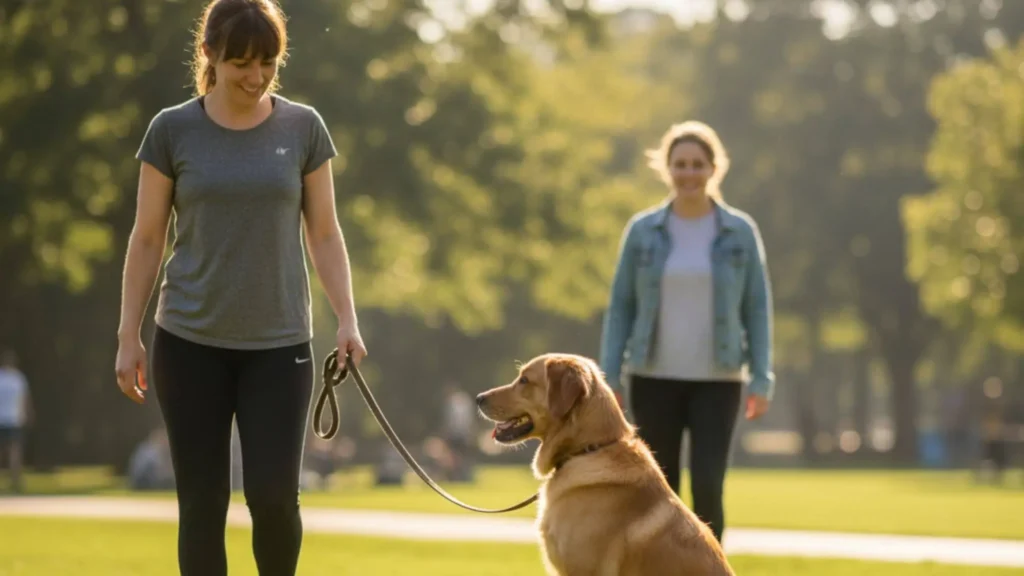
How to Stop Your Dog from Jumping on Guests
Prepare Before Guests Arrive
One of the easiest ways to prevent your dog from jumping on guests is to set the stage before visitors enter your home. Preparation helps your dog manage their excitement, reduces stress, and ensures everyone enjoys a calm, polite greeting.
🐕 1. Exercise Your Dog Ahead of Time
A tired dog is a calm dog. Before guests arrive:
- Take your dog for a walk or play a short game of fetch
- Use mental stimulation, like puzzle toys or scent games
- Practice basic commands like Sit and Stay
This helps burn off excess energy that might otherwise lead to jumping, making it easier for your dog to remain calm when guests arrive.
🐾 2. Set Up a Designated Greeting Area
Create a space where your dog can wait politely while guests enter:
- Use a mat, bed, or crate near the door
- Teach your dog a “Place” command to go there on cue
- Reward them for staying calm in that area until invited to greet
Having a consistent greeting spot gives your dog a clear expectation, reducing the impulse to jump.
💡 3. Use a Leash or Barrier if Needed
For dogs who get overly excited:
- Keep them on a leash briefly during initial greetings
- Consider a baby gate or exercise pen to control access
- Gradually reduce restrictions as your dog learns to stay calm
This approach allows you to manage the situation safely while reinforcing polite behavior.
🌟 4. Prepare Your Guests
Your dog’s training is more effective if guests know how to respond:
- Ask visitors to ignore jumping and wait for a calm greeting
- Encourage them to avoid eye contact or petting until your dog is seated
- Keep greetings calm and low-key to prevent overstimulation
Guests who follow these guidelines help reinforce your training efforts, making polite greetings more consistent.
Teach Polite Greetings at the Door
The front door is often the hardest place for dogs to remain calm because the excitement of guests arriving can be overwhelming. Teaching polite greetings at the door helps your dog learn self-control and ensures visitors are greeted safely and pleasantly.
🐕 1. Start with Basic Commands
Before guests arrive, make sure your dog knows Sit, Stay, or Place. These commands form the foundation of polite greetings:
- Ask your dog to Sit or go to their designated greeting spot before the doorbell rings.
- Use Stay to keep them in place as you open the door.
- Reward calm behavior immediately with treats or praise.
By practicing these commands consistently, your dog begins to understand that calm behavior leads to positive outcomes, while jumping does not.
🐾 2. Practice with Controlled Guest Arrivals
Simulate real-life situations to reinforce training:
- Ask a friend or family member to knock or ring the bell.
- Keep your dog on a leash or behind a gate if needed.
- Reward calm behavior — sitting or staying — with treats and praise.
- If your dog starts to jump, turn away and withhold attention until they settle.
Repetition in controlled scenarios builds the habit of calm greetings, making actual visits easier to manage.
💡 3. Gradually Introduce Real Guests
Once your dog masters polite greetings in practice:
- Invite guests to approach while reinforcing the same rules.
- Encourage guests to ignore jumping and only give attention when the dog is calm.
- Reward your dog consistently for staying grounded, sitting, or waiting at their designated spot.
Gradually increasing real-world distractions helps your dog generalize the behavior so they respond politely every time, not just during training.
🌟 4. Keep Greetings Calm and Consistent
Polite greetings aren’t just about sitting — it’s also about the energy you project:
- Avoid high-pitched voices or frantic movements when welcoming your dog.
- Encourage visitors to speak softly and move slowly.
- Reinforce calm behavior with praise, treats, or a gentle pat.
Consistency in tone and approach reinforces the training, ensuring your dog understands that calm greetings are always rewarded.
Use the “Place” Command
The “Place” command is a highly effective tool for teaching dogs polite greetings and managing excitement when guests arrive. It instructs your dog to go to a specific spot — such as a mat, bed, or crate — and remain there calmly until released. This not only prevents jumping but also gives your dog a clear structure and a sense of security.
🐕 1. Choose a Designated Spot
Pick a consistent area that will serve as your dog’s “place”:
- A dog bed or mat near the door works well
- Ensure the spot is comfortable, safe, and easily accessible
- Keep it consistent so your dog learns to associate this location with calm behavior
A designated spot provides a physical boundary, giving your dog a clear expectation of where to be during guest arrivals.
🐾 2. Teaching the “Place” Command Step-by-Step
- Lead your dog to the spot using a treat or favorite toy.
- Say the command clearly: “Place!” as they step onto the mat or bed.
- Reward immediately with praise or a treat when they stay on the spot.
- Gradually increase the duration they remain there, starting with a few seconds and building up to several minutes.
- Release with a cue, such as “Okay!” or “Free,” so your dog understands they may leave the spot only when invited.
Consistency is key: repeat the exercise multiple times each day until your dog reliably goes to their place on command.
💡 3. Apply During Real-World Scenarios
Once your dog has learned the “Place” command in training sessions, incorporate it into actual guest arrivals:
- Ask guests to ignore the dog until they are on their spot
- Keep your dog on the spot while greeting occurs
- Reward calm behavior consistently with treats, praise, or affection
- If the dog leaves the spot prematurely, gently guide them back without scolding
Practicing in real-life situations helps your dog generalize the behavior, ensuring they stay calm even during exciting or distracting moments.
🌟 4. Benefits of the “Place” Command
- Prevents jumping on guests by giving your dog a designated safe spot
- Builds impulse control and patience
- Provides a predictable routine for your dog, reducing anxiety during arrivals
- Can be used in other situations, such as vet visits, mealtime, or car rides
Get Help from Friends to Practice
One of the most effective ways to train your dog to greet guests politely is to simulate real-life situations before they happen. Involving friends or family members in practice sessions allows your dog to learn calm greetings in a controlled environment, making it easier for them to perform correctly when actual guests arrive.
🐕 1. Simulate Guest Arrivals
Ask a friend or family member to act as a visitor:
- Have them knock or ring the doorbell while you guide your dog to a calm behavior, such as sitting, staying, or going to their “Place.”
- Reward your dog immediately for staying calm and grounded.
- Repeat multiple times, gradually increasing the excitement level by having your friend enter the home or move closer to the door.
This method helps your dog practice polite greetings in a safe, low-pressure setting, so they are less likely to jump when real guests arrive.
🐾 2. Reinforce Calm Behavior
During these practice sessions, focus on rewarding exactly the behavior you want:
- Sitting or staying at the door
- Remaining on their designated “Place”
- Waiting calmly before receiving attention
Ignore unwanted jumping behavior completely. Consistently rewarding calm greetings reinforces the idea that polite behavior leads to rewards, while jumping does not.
💡 3. Gradually Increase Challenges
Once your dog responds reliably in a controlled practice:
- Invite different friends or family members to participate, introducing variety
- Increase distractions, such as multiple people entering, loud voices, or quick movements
- Continue using treats, praise, and calm reinforcement to encourage polite greetings
Gradually increasing the difficulty ensures your dog generalizes the training to any guest, not just familiar friends.
🌟 4. Benefits of Practicing with Friends
- Helps your dog gain confidence in greeting new people
- Reinforces impulse control in high-excitement situations
- Reduces stress and anxiety when real guests arrive
- Builds trust and strengthens your training routine
In short: Getting help from friends to practice simulated guest arrivals allows your dog to master polite greetings in a safe, controlled environment. By gradually introducing real-life challenges and consistently rewarding calm behavior, your dog learns to greet every guest politely — making visits enjoyable for everyone.
Common Mistakes Dog Owners Make (and How to Avoid Them)
Accidentally Reinforcing Jumping Behavior
One of the most common reasons dogs continue jumping on people is that owners, without realizing it, accidentally reinforce the behavior. While well-intentioned, certain actions can signal to your dog that jumping is acceptable or even rewarding. Understanding these mistakes is key to stopping the habit.
🐕 1. Giving Attention When the Dog Jumps
Dogs crave attention, and they quickly learn that jumping often guarantees it:
- Laughing or petting them while they jump
- Speaking to them in an excited voice
- Touching or hugging them during a jump
Even negative attention — scolding, pushing, or yelling — can be interpreted by your dog as attention. To them, any reaction means jumping gets noticed, which unintentionally reinforces the behavior.
🐾 2. Responding Inconsistently
Sometimes owners respond differently to jumping depending on the situation or guest:
- Allowing jumps for familiar people but not strangers
- Ignoring jumping sometimes but reacting at other times
Mixed messages confuse the dog, making it harder for them to learn polite greetings. Dogs thrive on consistent rules and repeated reinforcement of desired behavior.
💡 3. Offering Treats or Rewards at the Wrong Time
Rewarding your dog too late or while they are jumping can reinforce the wrong behavior:
- If you give a treat after a jump, your dog may associate the treat with jumping instead of calm behavior
- Always reward after the dog is calm and grounded, never during a jump
🌟 4. How to Avoid Reinforcing Jumping
- Ignore the jump: Turn your back, avoid eye contact, and withhold attention until your dog settles
- Reward calm behavior immediately: Give praise, treats, or petting when all four paws are on the ground
- Be consistent: Ensure every family member and guest follows the same rules
Being Inconsistent with Commands
Consistency is one of the most critical factors in dog training. Dogs learn through repetition and clear patterns, so inconsistency with commands can slow progress and confuse your dog. This is a common mistake dog owners make when trying to stop jumping on people.
🐕 1. Using Different Commands for the Same Behavior
Sometimes owners unintentionally use multiple commands for the same behavior, such as:
- Saying “Sit” one day and “Down” the next for a calm greeting
- Alternating between “Place” and “Go to your mat” inconsistently
Dogs rely on clear signals to understand what’s expected. Conflicting commands make it harder for them to grasp the desired behavior, prolonging jumping habits.
🐾 2. Not Enforcing Commands Every Time
Another inconsistency occurs when commands are applied only sometimes:
- Ignoring jumping behavior with certain guests or family members
- Letting the dog off the leash before they have mastered the command
- Praising calm behavior one day, but not reinforcing it the next
When commands are not enforced consistently, dogs receive mixed signals and are less likely to respond reliably.
💡 3. The Importance of Household-Wide Consistency
All family members and regular visitors must follow the same rules:
- Everyone should use the same command words
- Everyone should reward calm, grounded behavior consistently
- No exceptions should be made, even if the dog is excited or a guest is in a hurry
Consistency across all humans in the household ensures the dog clearly understands which behaviors are acceptable and which are not.
🌟 4. Tips to Maintain Consistency
- Create a training plan and share it with all household members
- Use visual cues or notes to remind guests of commands and rules
- Reward calm behavior every time, not just occasionally
- Stick to a daily routine to reinforce commands and polite greetings
Using Punishment Instead of Guidance
When dogs jump on people, some owners may instinctively resort to punishment — scolding, pushing, or even using aversive tools. While it may seem effective in the moment, relying on punishment often backfires and can harm the trust between you and your dog. Understanding why guidance works better is key to teaching polite greetings.
🐕 1. Why Punishment Is Ineffective
Punishment focuses on what the dog did wrong rather than teaching what to do instead. Dogs don’t understand punishment the way humans do — they often associate it with:
- The person who delivered it
- The environment at the moment
- A general sense of fear or stress
This can result in anxiety, confusion, and even more undesirable behaviors, rather than eliminating jumping.
🐾 2. Negative Side Effects of Punishment
- Fear or stress: Your dog may become nervous around visitors or fearful of training sessions.
- Avoidance behavior: Some dogs may try to escape or hide rather than learn calm greetings.
- Damage to your bond: Punishment can erode trust, making your dog less responsive to future commands.
💡 3. Guidance Through Positive Reinforcement
Instead of punishment, effective training uses guidance and positive reinforcement:
- Redirect unwanted behavior: Guide your dog to sit, stay, or go to their designated “Place” when excitement rises.
- Reward desired behavior immediately: Praise, treats, or affection reinforce calm, polite greetings.
- Consistent repetition: Reinforcing what you want rather than punishing what you don’t helps your dog learn more quickly and confidently.
🌟 4. Creating a Calm, Controlled Environment
- Prepare your dog before guests arrive with exercise or a brief training session
- Use a leash or baby gate if needed for management
- Maintain calm energy yourself — dogs mirror your behavior, so relaxed greetings lead to calmer dogs
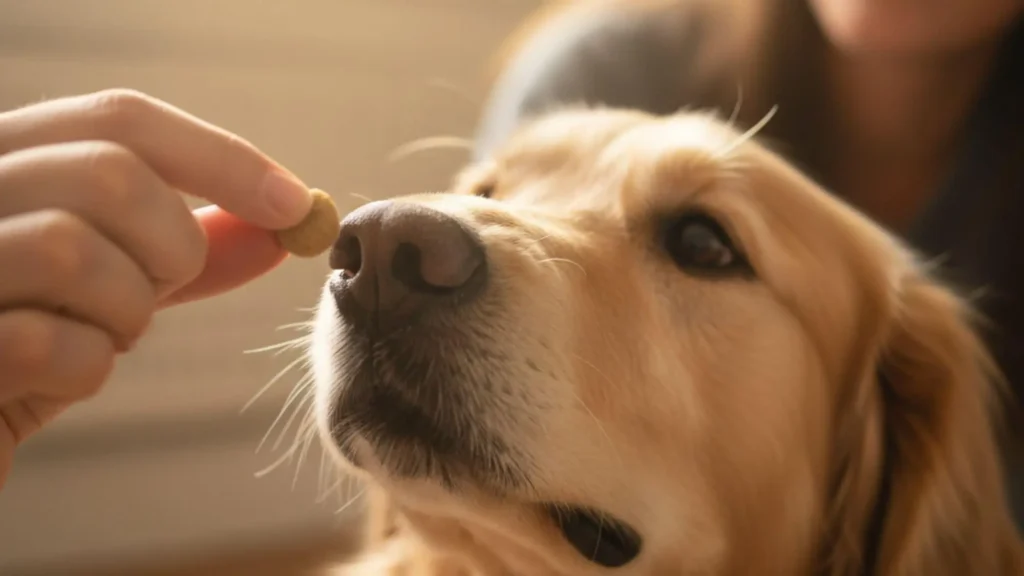
Skipping Socialization and Obedience Practice
Many dog owners underestimate the importance of socialization and regular obedience practice. Without these foundations, dogs may struggle to greet guests politely, leading to overexcitement, jumping, or even anxiety. Skipping these essential training steps is a common reason polite greetings don’t develop naturally.
🐕 1. Why Socialization Matters
Socialization teaches dogs to be comfortable around:
- New people and family members
- Visitors of different ages, sizes, and energy levels
- Various environments, noises, and distractions
A well-socialized dog is less likely to react with jumping out of excitement or fear. Early and ongoing socialization helps them understand appropriate behavior in different situations, including greetings at the door.
🐾 2. The Role of Obedience Practice
Obedience training reinforces commands like Sit, Stay, and Place, which are essential for calm greetings:
- Without obedience practice, your dog may not respond reliably to commands during high-energy situations
- Regular practice builds impulse control, ensuring your dog can manage excitement when guests arrive
- Obedience skills give you tools to redirect unwanted jumping safely and effectively
💡 3. How to Incorporate Both
- Schedule short, daily obedience sessions (5–10 minutes) to reinforce commands
- Introduce your dog to new people gradually in controlled environments
- Combine socialization and obedience: practice commands while interacting with strangers or family friends
- Reward calm, polite behavior consistently with treats, praise, or affection
🌟 4. Benefits of Consistent Socialization and Obedience
- Reduces overexcitement during greetings
- Builds confidence and trust in new situations
- Creates a solid foundation for advanced training, like polite door greetings
- Strengthens the bond between you and your dog
In short: Skipping socialization and obedience practice leaves your dog unprepared to manage excitement around guests. Regular practice and exposure to people, environments, and situations help your dog learn self-control and polite greeting behaviors, making visits calm, safe, and enjoyable for everyone.
FAQs – Dog Trainer’s Quick Answers
How Do I Stop My Puppy from Jumping on People?
Puppies are naturally energetic, curious, and eager to greet new people, which often leads to jumping. The good news is that early training and consistency can prevent this behavior from becoming a habit. By teaching your puppy polite greetings from the start, you set the foundation for a well-mannered adult dog.
🐕 1. Start Training Early
- Puppies are most receptive to learning between 8–16 weeks of age.
- Begin teaching basic commands like Sit, Stay, and Place immediately.
- Use short, frequent training sessions (3–5 minutes) to keep their attention without overwhelming them.
Early training ensures your puppy understands the difference between acceptable and unacceptable greetings, reducing frustration later.
🐾 2. Reinforce Calm Greetings
- Only reward your puppy when all four paws are on the ground.
- Ignore jumping by turning your back or stepping away until your puppy settles.
- Use treats, praise, or a favorite toy to reward calm behavior immediately.
Consistency in reinforcing calm greetings helps your puppy associate polite behavior with rewards, speeding up learning.
💡 3. Manage Excitement with Boundaries
- Use a leash, baby gate, or playpen during initial greetings to prevent jumping.
- Encourage your puppy to wait at a designated spot or mat until invited to greet.
- Gradually increase freedom as your puppy demonstrates control and calmness.
Setting boundaries helps your puppy learn impulse control and prevents jumping from becoming an ingrained habit.
🌟 4. Practice Socialization
- Introduce your puppy to different people in controlled, positive situations.
- Practice polite greetings with friends and family before guests arrive.
- Reward calm interactions and redirect overly excited behavior.
Socialization ensures your puppy becomes comfortable meeting new people without jumping or acting overexcited.
🦴 5. Be Patient and Consistent
Puppies are learning how to navigate the world, so progress may be gradual:
- Celebrate small successes
- Repeat training regularly throughout the day
- Avoid punishment — focus on positive reinforcement and guidance
Patience and consistent reinforcement are key to turning a jumpy puppy into a polite, well-mannered dog.
What Should I Do if My Dog Jumps on Strangers Outside?
Dogs often get overly excited when meeting strangers outdoors — at parks, on walks, or in public spaces. Jumping in these situations can be unsafe, both for your dog and others. Training your dog to greet strangers politely outside requires management, consistent guidance, and positive reinforcement.
🐕 1. Keep Your Dog on a Leash
- Always keep your dog on a leash when in public, especially around strangers.
- A short leash gives you better control and allows you to guide your dog away if they try to jump.
- Avoid letting your dog approach strangers freely until they reliably respond to commands.
Leash control is essential for safety and ensures your dog learns polite behavior in a structured way.
🐾 2. Teach Focused Attention
- Train your dog to look at you on cue or respond to commands like “Watch me” or “Sit.”
- Reward your dog for keeping calm and focused on you instead of jumping on a stranger.
- Practice these cues during walks and gradually increase distractions to reinforce obedience in real-world settings.
Focused attention reduces impulsive jumping and helps your dog stay calm in exciting environments.
💡 3. Use Positive Reinforcement
- Reward calm behavior immediately with treats, praise, or a favorite toy.
- If your dog jumps, avoid scolding or pushing, which can increase excitement or fear.
- Redirect your dog to a sit or stay position, then reward them once they are calm.
Positive reinforcement teaches your dog that polite greetings are always rewarding, even outside the home.
🌟 4. Manage Encounters with Strangers
- Alert strangers in advance if your dog is learning — ask them to ignore jumping until the dog is calm.
- Gradually introduce strangers by allowing your dog to greet from a sit position or from a safe distance.
- Practice with friends or neighbors to simulate outdoor interactions, building confidence and control.
Controlled introductions outside help your dog generalize polite greeting behavior to any environment, not just at home.
🦴 5. Be Patient and Consistent
Outdoor environments are full of stimuli — sounds, smells, and other dogs — which can make training challenging.
- Keep sessions short and frequent
- Be patient, consistent, and calm
- Gradually increase the level of distraction as your dog improves
Over time, your dog will learn to remain polite and composed, even around exciting strangers outdoors.
How Long Does It Take to Train a Dog Not to Jump?
The timeline for teaching a dog to stop jumping on people varies depending on age, temperament, breed, and consistency of training. While some dogs learn quickly, others may take several weeks or months to fully master polite greetings. Understanding what influences the process can help set realistic expectations and ensure success.
🐕 1. Factors That Affect Training Time
- Age: Puppies often learn faster than adult dogs because they are still forming habits. Adult dogs may require more repetition to unlearn established jumping behavior.
- Breed and Temperament: High-energy or excitable breeds may need longer, consistent practice, while calmer dogs may grasp the concept more quickly.
- Consistency: Daily practice, consistent commands, and uniform household rules dramatically speed up learning.
- Training Methods: Positive reinforcement, clear boundaries, and structured practice are more effective than punishment, which can slow progress.
🐾 2. Typical Training Timeline
- Puppies (8–16 weeks): May learn polite greetings within a few days to a couple of weeks with consistent short sessions and rewards.
- Adult Dogs (1+ years): Can take 4–8 weeks or longer, especially if jumping has been reinforced for a long time.
- High-Excitement Situations: Even after basic training, continued practice may be necessary during high-stimulus events like parties or outdoor encounters.
💡 3. Tips to Speed Up the Process
- Short, frequent training sessions (5–10 minutes) maintain focus and prevent frustration.
- Practice in real-world scenarios such as guest arrivals, walks, and public encounters.
- Use positive reinforcement consistently to reward calm, grounded behavior.
- Involve the whole household so commands and rules are uniform.
🌟 4. Patience and Realistic Expectations
Training a dog to stop jumping is a gradual process, and setbacks may occur:
- Some days may go perfectly, while others may require extra patience
- Celebrate small victories to stay motivated
- Remember that with consistent reinforcement, most dogs eventually learn to greet politely and calmly
What Are the Best Training Treats for Dogs?
Selecting the right training treats is crucial for effective dog training. The best treats are those that are small, tasty, and easy to handle, ensuring your dog remains engaged and motivated during training sessions. Here’s a guide to help you choose the most effective treats for your dog’s training needs.
🐕 1. Characteristics of Effective Training Treats
- Size: Treats should be small (about the size of a pea) to allow quick consumption and to prevent overfeeding.
- Taste: Opt for high-value treats that your dog finds irresistible, such as freeze-dried meats or soft chews.
- Texture: Soft and moist treats are ideal as they are easy to chew and less likely to crumble.
- Convenience: Choose treats that are easy to carry and non-greasy to avoid mess during training sessions.
🐾 2. Top Treat Options for Training
- Freeze-Dried Meats: Treats like freeze-dried liver or beef heart are highly palatable and easy to handle. Brands such as Stella & Chewy’s and Crumps Naturals offer quality options.
- Soft Chews: Products like Pupford Training Treats are designed specifically for training, being soft and easy to chew.
- Cheese: Small cubes of cheddar or mozzarella can be enticing for many dogs. Ensure they are given in moderation to avoid digestive issues.
- Cooked Meats: Chicken breast, turkey, or hot dogs cut into small pieces can serve as high-value rewards.
💡 3. Homemade Training Treat Ideas
Creating your own training treats can be both cost-effective and tailored to your dog’s preferences:
- Liver Cake: A blend of liver and flour baked into a cake, then cut into small cubes.
- Chicken Jerky: Thinly sliced chicken breast baked at a low temperature until dry and chewy.
- Peanut Butter Bites: Mix peanut butter with oats and freeze into bite-sized portions.
Always ensure that homemade treats are dog-safe and free from harmful ingredients like garlic or xylitol.
🌟 4. Tips for Using Training Treats Effectively
- Consistency: Use the same treat consistently to reinforce specific behaviors.
- Timing: Reward your dog immediately after the desired behavior to create a strong association.
- Variety: Rotate between different treats to maintain your dog’s interest and motivation.
- Portion Control: Adjust your dog’s regular meals to account for the calories from training treats to prevent overfeeding.
Conclusion
Summarize Key Points: Patience, Consistency, Positive Reinforcement
Training a dog to stop jumping on people can feel challenging at times, but focusing on three core principles—patience, consistency, and positive reinforcement—makes the process far more effective and enjoyable for both you and your dog.
🐕 1. Patience
Dogs don’t learn polite greetings overnight. Every dog is different, and factors like age, breed, temperament, and previous experiences affect how quickly they learn.
- Celebrate small victories rather than expecting perfection immediately.
- Understand that setbacks are normal — a previously calm dog may occasionally jump due to excitement or distractions.
- Maintaining a calm and positive attitude helps your dog feel secure and reinforces desired behavior.
Patience ensures training remains stress-free and strengthens the bond between you and your dog.
🐾 2. Consistency
Consistency is key to helping your dog understand what behavior is expected:
- Use the same commands (“Sit,” “Stay,” “Place”) every time.
- All household members and regular visitors should follow the same rules to avoid confusion.
- Apply rewards and guidance uniformly — never reward jumping or allow exceptions.
Consistent routines and commands help your dog form lasting habits and understand that polite greetings are always required, not just sometimes.
💡 3. Positive Reinforcement
Positive reinforcement teaches your dog what to do, rather than punishing what not to do:
- Reward calm, grounded behavior immediately with treats, praise, or toys.
- Redirect unwanted jumping behavior gently instead of scolding or punishing.
- Reinforcement strengthens the connection between desired behavior and rewards, making learning faster and more enjoyable.
Positive reinforcement fosters trust and encourages your dog to repeat good behavior voluntarily.
🌟 Putting It All Together
By combining patience, consistency, and positive reinforcement, you create a structured, supportive training environment:
- Patience gives your dog time to learn and reduces stress.
- Consistency ensures they clearly understand expectations.
- Positive reinforcement makes training enjoyable and effective.
Together, these principles form the foundation for polite greetings, better behavior, and a stronger bond between you and your dog.
Reassure Readers: Every Dog Can Learn Polite Greetings with Practice
It’s important for dog owners to remember that no dog is “incorrigible” when it comes to learning polite greetings. While some dogs may take longer than others due to age, breed, or temperament, every dog can improve with consistent practice, patience, and positive guidance.
🐕 1. Dogs Learn at Their Own Pace
- Puppies often pick up new behaviors quickly, but adult dogs can learn just as effectively — it may simply require more repetition and structured practice.
- Excitable or high-energy breeds may need additional guidance, but this doesn’t mean success is impossible.
- Each small step forward is progress, and even minor improvements in calm greetings are worth celebrating.
🐾 2. Mistakes Are Part of the Learning Process
- Dogs may occasionally forget their training when excited — this is normal.
- Instead of getting frustrated, use these moments as teachable opportunities: redirect, reward calm behavior, and repeat the exercise.
- Consistency helps your dog understand that polite greetings are always expected, no matter the situation.
💡 3. Training Builds Confidence and Trust
- Teaching your dog polite greetings helps them feel more secure and confident around strangers.
- Training strengthens the bond between you and your dog, turning everyday interactions into positive experiences.
- Calm, polite behavior reduces stress for both your dog and visitors, creating a happier environment for everyone.
🌟 4. Encouragement for Dog Owners
- Success may take days, weeks, or a few months, but with daily practice and positive reinforcement, every dog can learn polite greeting habits.
- Remember: patience, consistency, and praise are far more effective than punishment or scolding.
- Celebrate your dog’s progress — even small improvements demonstrate growth and learning.
Include a Friendly CTA
A call-to-action (CTA) is a crucial part of your blog post because it motivates readers to take the next step. After providing valuable training advice, a friendly CTA encourages dog owners to apply what they’ve learned immediately, reinforcing the importance of action and consistency.
🐕 1. Make the CTA Positive and Encouraging
- Use uplifting language that inspires confidence, such as:
- “Start training today and enjoy calmer, happier greetings!”
- “Your dog can learn polite greetings — begin today and see results in just a few weeks!”
- Emphasize the benefits of taking action: calmer interactions, safer visits, and a happier relationship with their dog.
🐾 2. Keep It Simple and Clear
- Avoid complicated instructions in the CTA. Focus on a single, actionable step, such as starting a training session or practicing one command.
- Examples:
- “Practice the ‘Sit’ command with your dog today!”
- “Try the ‘Place’ command during your next guest arrival!”
A simple CTA is easier for readers to follow and increases the likelihood they will act immediately.
💡 3. Reinforce Reader Confidence
- Reassure readers that success is achievable:
- “With patience and consistency, your dog will learn to greet guests politely.”
- “Every dog can improve — start today and enjoy the rewards!”
- Building confidence encourages readers to feel empowered rather than overwhelmed by training.
🌟 4. Placement Matters
- Place the CTA at the end of your post or after a key section summarizing the benefits.
- Highlight it visually with a bold font, button, or colored text to make it stand out.
- Consider linking it to a related resource, like a printable training guide, YouTube demo, or product page for training treats, for extra engagement.
In short: A friendly CTA motivates readers to take immediate action, reinforces the value of your advice, and boosts confidence. By keeping it positive, clear, and actionable, you encourage dog owners to start training today, turning knowledge into results and creating calmer, happier greetings.

